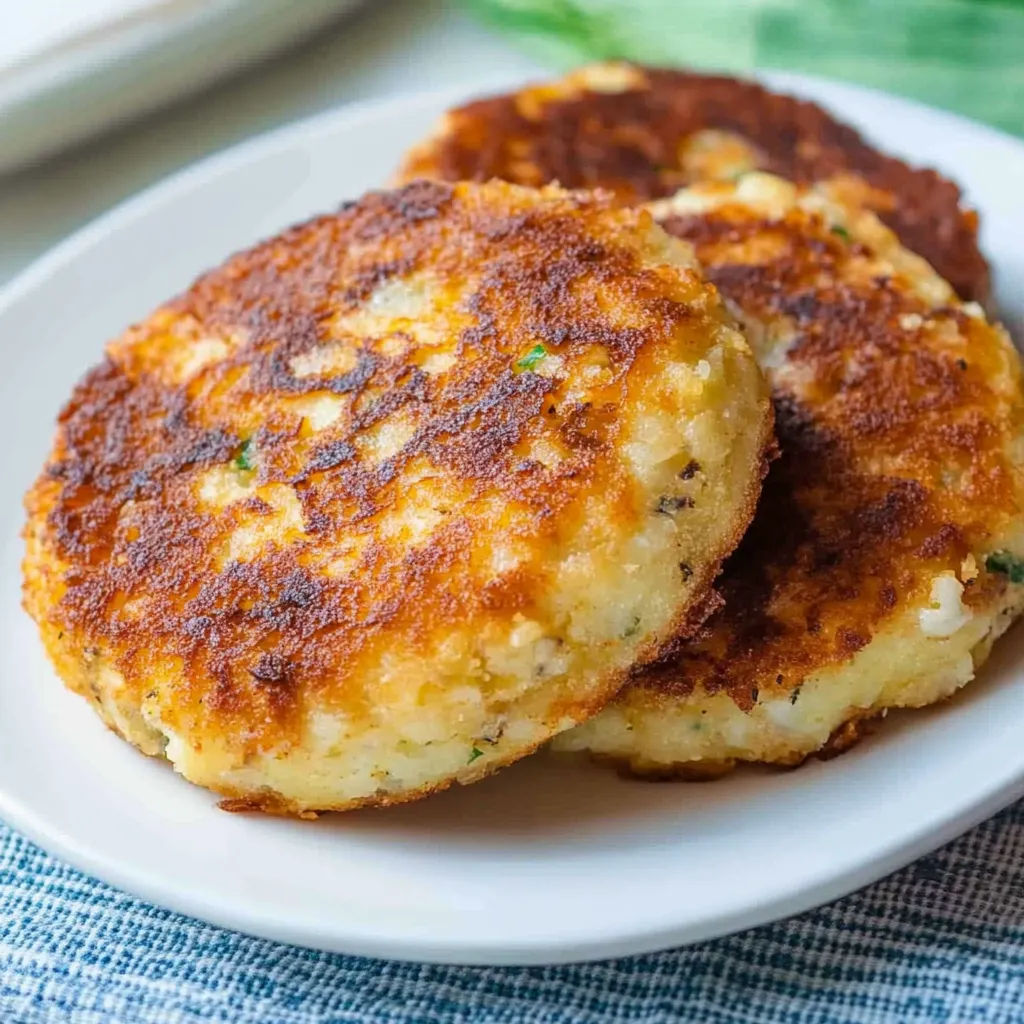 Pin it
Pin it
This traditional Newfoundland recipe brings together simple ingredients to create crispy, flavorful fish cakes that have been a staple in Atlantic Canadian homes for generations. The combination of salt cod and potatoes makes for a hearty dish that connects us to the fishing heritage of Newfoundland.
I first learned to make these fish cakes from my grandmother who insisted that the salt cod had to soak overnight and that savory was non-negotiable. Years later, I still follow her method and the nostalgic aroma fills my kitchen every time.
Ingredients
- Salt dried cod: 1½ pounds – the traditional choice that provides distinctive flavor that regular cod cannot match
- Butter: ¼ cup – adds richness and helps brown the fish cakes beautifully
- Small onion, chopped: provides sweet aromatic base that balances the saltiness
- Mashed potato: 6 cups – creates the perfect texture and stretches the fish for economical meals
- Egg, beaten: acts as the important binder that holds everything together
- Dried savory: 2 tbsp – the authentic Newfoundland herb that makes these cakes distinctive
- Black pepper: ½ tsp – adds subtle heat without overpowering the delicate fish flavor
- Flour for coating: creates that essential crisp exterior when fried
Step-by-Step Instructions
- Soak the Salt Cod:
- Place the salt cod in a large bowl and cover completely with cold water. Allow to soak overnight in the refrigerator, changing the water once or twice if possible to remove excess salt. This patience-requiring step is crucial for balancing the final saltiness of your fish cakes.
- Simmer the Fish:
- Add the soaked cod to a pot of boiling water and simmer gently for about 15 minutes until the fish flakes easily. Be careful not to boil vigorously or the fish will become tough. Drain thoroughly and allow to cool until you can handle it comfortably.
- Flake the Fish:
- Using a fork, carefully break apart the cooled cod into small, uniform flakes. Remove any bones or skin you might find. The texture should be fine enough to distribute through the potato mixture but not so fine that it loses its identity in the cakes.
- Prepare the Base:
- Melt butter in a heavy skillet over medium heat until it begins to foam. Add the chopped onions and cook them slowly until they become translucent and soft but not browned, about 5 to 7 minutes. This builds the aromatic foundation for your fish cakes.
- Mix the Ingredients:
- In a large bowl, combine the flaked fish, softened onions, mashed potatoes, beaten egg, savory, and black pepper. Mix thoroughly but gently to maintain some texture. The mixture should hold together when formed but not be overly wet or sticky.
- Form the Cakes:
- With clean hands, form the mixture into patties about 3 inches across and ½ inch thick. For the best texture, avoid making them too thick or they will not cook properly in the center. Roll each cake in flour, coating all sides lightly but completely.
- Fry to Perfection:
- Heat about ¼ inch of canola oil in a heavy skillet over medium heat until shimmering but not smoking. Add the fish cakes, being careful not to overcrowd the pan. Fry for 4 to 5 minutes on each side until golden brown and heated through. Transfer to paper towels to drain briefly.
- Serve Hot:
- Plate the fish cakes immediately while hot and crispy. For authentic Newfoundland flavor, top with traditional scrunchions if desired.
 Pin it
Pin it
The savory herb is what makes these truly authentic Newfoundland fish cakes. When I visited St. Johns several years ago, a local fisherman told me that the distinct flavor of savory is what separates a tourist version from the real thing. I bought a large bag from a local shop and guard it carefully in my spice cabinet for these special recipes.
Fresh Cod Adaptation
While salt cod is traditional, many modern cooks prefer using fresh cod for convenience and lower sodium content. To substitute, simply poach 2 pounds of fresh cod fillets in water with a bay leaf until just flaky. Cool, flake, and proceed with the recipe as written. Remember to taste and adjust the salt level since you are missing the inherent saltiness of the dried fish. The texture will be slightly different but still delicious.
Storage and Reheating
These fish cakes keep beautifully in the refrigerator for up to three days. Store them separated by parchment paper in an airtight container. To reheat, place them on a baking sheet in a 350°F oven for about 10 minutes until heated through. Avoid microwaving as this will make them soggy. They also freeze exceptionally well for up to three months when wrapped individually in plastic wrap then stored in freezer bags.
Serving Traditions
In Newfoundland, these fish cakes are often served for breakfast alongside eggs or as a main dish for dinner with pickled beets and mustard pickles. The traditional accompaniment is scrunchions, those crispy bits of rendered salt pork that add incredible flavor. For a more modern approach, serve with a light salad dressed with lemon vinaigrette or with a dollop of homemade tartar sauce for a delightful contrast to the savory cakes.
 Pin it
Pin it
Frequently Asked Questions
- → Can I use fresh cod instead of salt cod?
Yes, fresh or frozen cod can be substituted for salt cod if you prefer less sodium. Make sure to adjust the seasoning, as fresh fish lacks the natural saltiness of dried cod.
- → What is the purpose of soaking salt cod?
Soaking salt cod overnight helps reduce its high sodium content, making it easier to use in recipes. It also rehydrates the fish, restoring its texture.
- → What are scrunchions, and how do I use them?
Scrunchions are small cubes of fried, rendered pork fatback. They add a crispy, savory finish and are traditionally served as a topping for Newfoundland fish cakes.
- → Which herbs can I use if I don’t have savoury?
If you don’t have dried savoury, substitutes like parsley, dill, or tarragon work well. Choose herbs that complement the mild flavor of the fish.
- → Can I make this dish in advance?
Yes, you can prepare the fish cake mixture in advance and refrigerate it for up to a day. Form and fry the cakes just before serving for the best texture and flavor.
